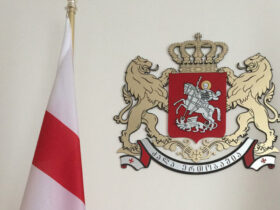LOS ANGELES — A country of 1.38 billion people, India is lauded for its rich religious and ethnic diversity — comprised of 28 states, each with a unique language, history and culture. India has also been of keen interest to scholars, especially in the post-colonial era. Like many Asian countries, it has seen tremendous economic and political development in recent decades, but it continues to be plagued by inequality.
An ally of strategic importance for the West, India has taken on the title of the “world’s largest democracy,” presented as a beacon of “freedom” in the Indo-Pacific region to counter the authoritarian leanings of China. However, for much of its history and even more so under Prime Minister Narendra Modi and his Hindu nationalist government, marginalization, more so than democracy, seems to be at the heart of Indian political society.
The Origins: British Imperialism, The Post-colonial State and the Rise of the BJP
Contrary to popular belief, the Indian caste system in its most widespread and rigid form is a product of colonialism. In fact, fueling caste and religious strife were instruments of British power and authority — by creating divisions among the people, there would be no united front to rise up against them. Even with eventual Indian independence from Britain, the religious divide between Hindus and Muslims proved difficult to reconcile and led to India’s partition into the separate nations of India and Pakistan, and later, Bangladesh.
While a formal ban of the caste system was passed in 1948 and other political strides have occurred since the modern state has carried on its predecessors’ legacy of marginalization under the veil of post-colonial democracy.
This sets the stage for the rise of Narendra Modi and his Hindu nationalist party, the Bharatiya Janata Party (BJP). While India is incredibly diverse, Hindus make up 80% of the country’s population, and to Modi and BJP members, India is “fundamentally a Hindu rashtra (nation).” The BJP is guided by a “core philosophy of Hindutva (Hindu-ness)” at the expense of the country’s other minority groups, an idea they have consistently expressed in Parliament and in other public forums.
The BJP is not solely a party of religion — they are strongly pro-business and believe in robust foreign and national security policies. Before his ascension to prime minister, Modi served as the chief minister of the state of Gujarat, which saw tremendous economic growth and investment under his tenure. So in 2014, in the midst of an economic downturn, Modi ran for prime minister on a promise to bring the same prosperity he did to Gujarat to the rest of the country.
From his initial rise to the national stage, Modi’s skills as a public speaker and his inspiring life story helped him construct a charismatic public persona and gain the strong base he still holds today. Throughout his first term, 88% of the Indian population, or nearly nine-in-ten Indians, held a favorable opinion of Modi. And even as his political message shifted — from capitalist to religious fundamentalist; from populist to authoritarian — his followers have stuck by him.
Marginalization as a Political and Societal Tool
Modi has expressed anti-Muslim tendencies as early as his tenure as chief minister of Gujurat, but it has only amplified in his time as Prime Minister. This sentiment is not only voiced in his rhetoric but is prevalent institutionally. Modi’s re-election in 2019 was the “first time in independent India where the ruling party does not have a single Muslim representative in Parliament despite the population of Muslims in India being 190 million.”
Later that year, the Modi administration passed the Citizenship (Amendment) Act (CAA) that made religion a basis for granting citizenship for the first time in Indian history. The law “specifically fast-tracks asylum claims of non-Muslim irregular immigrants from the neighboring Muslim-majority countries of Afghanistan, Bangladesh, and Pakistan.” Along with a plan for a national citizenship verification process aimed to identify “illegal migrants,” there are fears that if deemed illegal by the BJP government, “millions of Indian Muslims, including many families who have lived in the country for generations, could be stripped of their citizenship rights and disenfranchised.”
Modi has defended the policies as not being discriminatory, saying that “Muslims are a part of our nation, and they have equal rights and duties as others.” However, he has not taken an initiative to “rein in his party members and supporters who routinely vilify Muslims, or press state governments to prosecute those responsible for abuses.”
This is in conjunction with a rise in lynchings against religious minorities orchestrated by “cow vigilantes,” or religious zealots aiming to enforce beef bans, as the cow is considered a sacred animal in Hinduism. During Modi’s first term, 44 people were killed in these cow-protection attacks — 36 of whom were Muslim. Police stalled the prosecutions of the attackers, and BJP lawmakers publicly supported the attacks, going as far as offering financial and legal support to perpetrators.
More recently, in 2021, hate speech and attacks against minorities in their places of worship have skyrocketed. There were at least 300 acts of violence against religious minorities in the first nine months, but very few of the perpetrators have faced any consequences and no arrests have been made.
Instead, state governments have reinforced these ideas by passing several new laws. On Dec. 23, the lower house of parliament in the state of Karnataka passed the Protection of Right to Freedom of Religion bill, which would prohibit conversion from Hinduism to another religion.“Violators” could be met with fines or even incarceration.
A few days later, on Christmas, Modi’s government blocked the Missionaries of Charity, founded by Mother Teresa and a significant source of funding for churches in India, from receiving foreign contributions. That same day, BJP lawmaker Tejasvi Surya publicly called for a ghar wapsi (“return home”), or the conversion of Christians and Muslims “back” to Hinduism.
The national government has not condemned the attacks against minority groups. Modi, who has not held a press conference in years, and the Indian Minister of Home Affairs, Amit Shah, have both not commented on the recent uptick in religiously motivated hate crimes.
Even with these authoritarian trends, Modi has mostly maintained his popularity — aside from fluctuations due to the economic impacts of COVID-19. He has been able to create a base across age and socioeconomic groups, with surprisingly strong support from millennials. India has one of the largest millennial populations, making up over 400 million of its population, and according to polling data from the 2019 election, nearly 40% of those ages 18 to 35 voted for the BJP. For millions of Indians,
Modi represents a shift from the “English-speaking, Western-educated technocrats who shared little in common with the country’s largely-agrarian and vernacular-speaking population” towards leaders “who speak, pray, and look like them.” His promises of social mobility for the middle class and empowerment of the country’s large labor force have only reinforced his popularity.
While a polarizing and controversial figure to many, he does have significant support among non-resident Indians (NRIs) living in Western countries. This can be attributed to his numerous high-profile visits from the United States to Australia, which has generated large turnouts – over 20,000 NRIs from across North America attended a Modi-led event in Madison Square Garden in 2014, and he garnered a crowd of over 50,000 in Houston in 2019. Modi’s “sustained and substantive engagement” with the Indian diaspora has been a key focal point of his foreign policy, and his “universal” vision has helped him develop a similar base of support abroad as he did at home.
What Comes Next?
Marginalization is not new to India, but under Modi, religious tensions and attacks on minorities have soared to unprecedented heights. Through political and legal means, the BJP’s Hindutva rhetoric has left the livelihoods of millions hanging in the balance. But in Modi’s pursuit of a Hindu rashtra, India is losing its strategic leverage in South Asia, and its traditional role of promoting harmony in the region is steadily weakening.
Yashwant Sinha, former Indian foreign minister, commented that “[t]he openly partisan approach to communal issues has created a very peculiar situation for us as far as that moral high ground in neighborhood policy is concerned.”
Aparna Pande, director of the India initiative at the Hudson Institution, similarly noted, “If you are pushing a nationalist narrative, it is difficult to then ask your neighbors to not do the same… You will then see every country in South Asia becoming more nationalist and, forget about anything else, that creates a strategic challenge for India.”
The coming year will be crucial for Modi and the BJP to take a stand against religiously motivated attacks, if not to promote human rights but to protect the country’s security interests.
Will the “world’s largest democracy” survive? Only time will tell.








